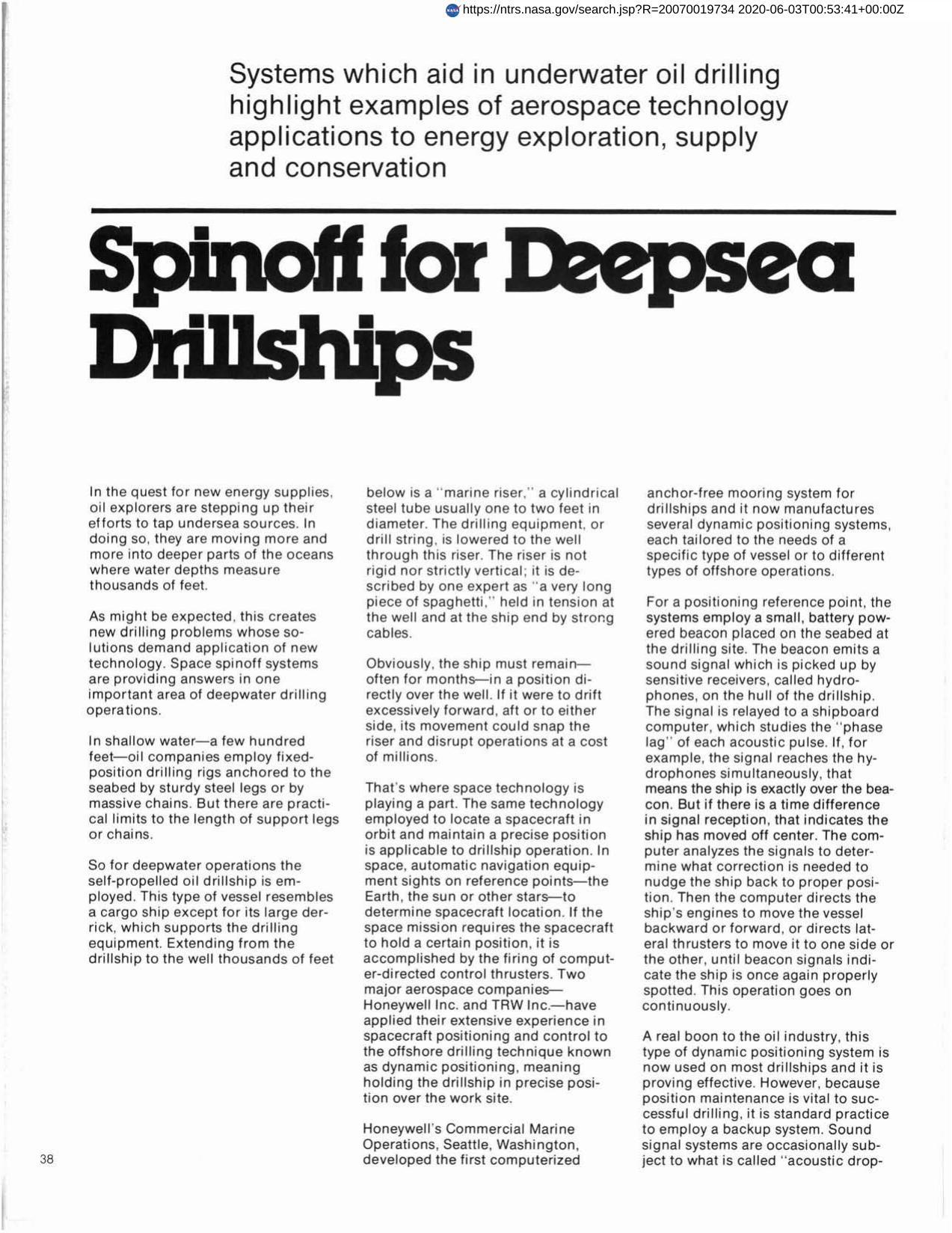
Spinoff for Deepsea Drillships
Deep sea drill ships such as Discoverer Seven Seas drill for oil and gas through thousands of feet of water. Unanchored, they need a method of holding position directly over the drill site often for months. Honeywell, Inc. developed a mechanism for a positioning reference point, the systems employ a small, battery powered beacon placed on the seabed at the drilling site. The beacon emits a sound signal which is picked up by sensitive receivers called hydrophones. The signal is relayed to a shipboard computer which studies a phase lag of each acoustic pulse. Computer analyzes signals to determine what correction is needed to nudge the ship back to proper position.
Full article: http://hdl.handle.net/hdl:2060/20070019734

Spinoff for Deepsea Drillships

Spinoff for Deepsea Drillships













